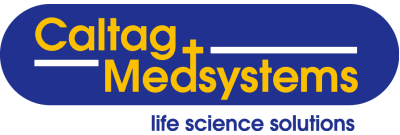Mouse Il27 Antibody
| Code | Size | Price |
|---|
| PSI-60-460-400ul | 400ul | £626.00 |
Quantity:
Prices exclude any Taxes / VAT
Overview
Host Type: Rabbit
Antibody Isotype: Rabbit Ig
Antibody Clonality: Polyclonal
Regulatory Status: RUO
Target Species: Mouse
Application: Western Blot (WB)
Storage:
Store at 4˚C for three months and -20˚C, stable for up to one year. As with all antibodies care should be taken to avoid repeated freeze thaw cycles. Antibodies should not be exposed to prolonged high temperatures.
Images
Documents
Further Information
Additional Names:
Interleukin-27 subunit alpha, IL-27 subunit alpha, IL-27-A, IL27-A, p28, Il27, Il27a
Application Note:
For WB starting dilution is: 1:1000
Background:
Cytokine with pro-and anti-inflammatory properties, that can regulate T helper cell development, suppress T-cell proliferation, stimulate cytotoxic T cell activity, induce isotype switching in B-cells, and that has diverse effects on innate immune cells. Among its target cells are CD4 T helper cells which can differentiate in type 1 effector cells (TH1), type 2 effector cells (TH2) and IL17 producing helper T-cells (TH17). It drives rapid clonal expansion of naive but not memory CD4 T-cells. It also strongly synergizes with IL-12 to trigger interferon-gamma/IFN-gamma production of naive CD4 T-cells, binds to the cytokine receptor WSX-1/TCCR which appears to be required but not sufficient for IL-27-mediated signal transduction. IL-27 potentiate the early phase of TH1 response and suppress TH2 and TH17 differentiation. It induces the differentiation of TH1 cells via two distinct pathways, p38 MAPK/TBX21-and ICAM1/ITGAL/ERK-dependent pathways. It also induces STAT1, STAT3, STAT4 and STAT5 phosphorylation and activates TBX21/T-Bet via STAT1 with resulting IL12RB2 up-regulation, an event crucial to TH1 cell commitment. It suppresses the expression of GATA3, the inhibitor TH1 cells development. In CD8 T-cells, it activates STATs as well as GZMB. IL-27 reveals to be a potent inhibitor of TH17 cell development and of IL-17 production. Indeed IL-27 subunit p28 alone is also able to inhibit the production of IL17 by CD4 and CD8 T-cells. While IL-27 suppressed the development of proinflammatory Th17 cells via STAT1, it inhibits the development of anti-inflammatory inducible regulatory T-cells, iTreg, independently of STAT1. IL-27 has also an effect on cytokine production, it suppresses proinflammatory cytokine production such as IL2, IL4, IL5 and IL6 and activates suppressors of cytokine signaling such as SOCS1 and SOCS3. Apart from suppression of cytokine production, IL-27 also antagonizes the effects of some cytokines such as IL6 through direct effects on T cells. Another important role of IL-27 is its antitumor activity as well as its antiangiogenic activity with activation of production of antiangiogenic chemokines such as IP-10/CXCL10 and MIG/CXCL9.
Background References:
- Li, J.J., et al. J. Immunol. 185(7):4401-4409(2010)
- Zhang, J., et al. J. Biol. Chem. 285(28):21269-21281(2010)
- Baker, B.J., et al. Glia 58(9):1082-1093(2010)
- Murugaiyan, G., et al. Proc. Natl. Acad. Sci. U.S.A. 107(25):11495-11500(2010)
Buffer:
Supplied in PBS with 0.09% (W/V) sodium azide.
Concentration:
batch dependent
Conjugate:
Unconjugated
DISCLAIMER:
Optimal dilutions/concentrations should be determined by the end user. The information provided is a guideline for product use. This product is for research use only.
Immunogen:
This Mouse Il27 antibody is generated from rabbits immunized with a KLH conjugated synthetic peptide between 124-150 amino acids from the Central region of mouse Il27.
NCBI Gene ID #:
246779
NCBI Official Name:
Interleukin-27 subunit alpha
NCBI Official Symbol:
Il27
NCBI Organism:
Mus musculus
Physical State:
Liquid
PREDICTED MOLECULAR WEIGHT:
27 kDa
Protein Accession #:
Q8K3I6
Purification:
This antibody is purified through a protein A column, followed by peptide affinity purification.
Research Area:
Cancer,Immunology
Swissprot #:
Q8K3I6
User NOte:
Optimal dilutions for each application to be determined by the researcher.



